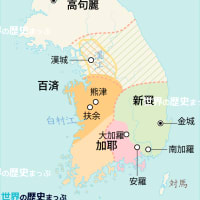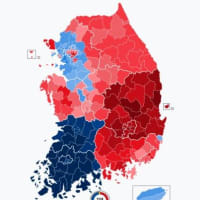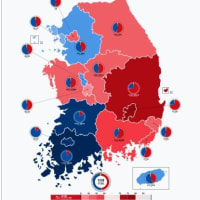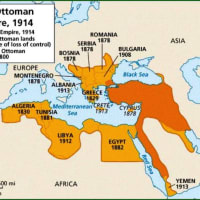Nightmare Carry Trade Scenario Tuesday, June 06,2006
I have been thinking about the nightmare carry trade scenario.
In other words what is the worst possible situation for carry trade players?
For those unfamiliar with the term "carry trade" I will use the definition found on Freebuck.Com.
Carry trade - The speculation strategy that borrows an asset at one interest rate, sells the asset, then invests those funds into a different asset that generates a higher interest rate yield. Profit is acquired by the difference between the cost of the borrowed asset and the yield on the purchased asset.
Nightmare Scenario
I view the nightmare scenario something like the following.
End of quantitative easing (QE) in Japan
End of ZIRP in Japan (Rising interest rates)
Rising interest rates in Europe
Falling interest rates in the US
Tightening credit in the US
A rising YEN vs. the US$
Quantitative Easing
Quantitative Easing has already ended in Japan. Quantitative Easing simply means excessive printing of money by the Bank of Japan in order to defeat deflation that has been raging for about 18 years.
I believe that ZIRP (zero interest rate policy) and QE (quantitative easing) prolonged Japan's deflation but for now that is irrelevant. The key point is that both are about to come to an end. Proof of the end of QE can be found in the following chart courtesy of Contrary Investor.

As you can see, money supply in Japan nearly doubled between 2001 and 2006. Hedge funds could borrow YEN at zero % and invest in the US stock market, or gold, or silver, or after all of these rate hikes get 5% in US treasuries. The only real worry was the YEN rising in value more than the return on other investments. With Japan unwilling to let the YEN rise, players piled high on the carry trade.
From a US$ perspective, when interest rates were slashed to 1%, another possible carry trade was to borrow funds in US$ and invest in gold, silver, or equities. With the S&P dividend ratio under 2% and interest rates close to 5%, the US carry trade slowly died with each rate hike.
Rising interest rates in Europe and Japan, and falling rates in the US (a global equalization of interest rates) will end more of these carry trades.
Contrary Investor points out "meaningful rate of change decline in the Japanese monetary base have preceded each meaningful US recession of the last three decades. Large percentage drops occurred in '73/'74, '79/'80, 1990, and 2000. If indeed history has the chance of repeating itself ahead, what should we now be expecting for the macro US economy as we look directly at current Japanese monetary base contraction?"
Speculation in various markets is extreme as noted by trillions of dollars worth of derivatives floating around. The unwinding of those derivatives and any related carry trades is not likely to be a smooth event. In Financial War Games I talked about the ECB running "stress tests" to see if they could handle a derivative meltdown. We might just be put to the test. Clearly we are at a serious crossroads of the greatest liquidity experiment the world has ever seen, with multiple players, in multiple countries, doing mind boggling things with tremendous leverage. Right now, the Fed is in a Quandary about what to do. In spite of that, Bernanke thinks the Fed can magically control the global economy with a looming US recession on top of a housing bubble bust. It is the height of hubris.
ZIRP
QE is toast. Let's consider the end of ZIRP (Zero Interest Rate Policy).
Bloomberg is reporting Yosano Says Japan Must Eventually Say Deflation Over.
May 30 (Bloomberg) -- Japan's government will eventually need to declare an end to deflation, Economic and Fiscal Policy Minister Kaoru Yosano said.
"At some point citizens will need to be told by academics or politicians that sustained price declines have ended," said Yosano, who was speaking to lawmakers in Tokyo today. "Hardly any consumers are under the impression that prices are falling."
Japan's core consumer prices have risen for the past six months, signaling the economy's tussle with more than seven years of deflation is ending. Rising prices and an expanding economy may prompt the Bank of Japan to raise borrowing costs for the first time in almost six years as soon as July, economists say.
Chief Cabinet Secretary Shinzo Abe reiterated separately that the central bank should keep borrowing costs near zero to support the economy. He said the bank and the government need to work together to end deflation and ensure prices don't resume falling. Abe was speaking to reporters at a regular news conference in Tokyo today.
For now, Japan seems unwilling to let interest rates rise as evidenced by the Financial Times article BoJ injects $13bn into market to cut rates.
The Bank of Japan on Monday injected a massive Y1,500bn ($13.3bn, €10.5bn, £7.2bn) into the money market as it desperately sought to keep overnight interest rates under control.
The injection came as overnight rates once again tested the 0.1 per cent ceiling, calling into question the central bank's ability to keep rates at "effectively zero" in line with its stated policy.
The market is attempting to force Japan to hike. Japan is resisting. With a national debt of 150% of GDP how much longer can Japan resist? A rising YEN would be bad for those borrowing in YEN and investing in US treasuries. A rising dollar is bad for those borrowing US$ and buying gold, silver, or falling US$ denominated assets. The cross currents on some of these trades are significant, even though the YEN and the dollar can not both fall relative to each other. What can happen however is falling asset prices (stocks, gold, silver, copper, equities) at a rate greater than any interest rate differential. That is likely in a monetary tightening situation as we are seeing in both Japan and the US.
http://globaleconomicanalysis.blogspot.com/2006/06/nightmare-carry-trade-scenario.html
I have been thinking about the nightmare carry trade scenario.
In other words what is the worst possible situation for carry trade players?
For those unfamiliar with the term "carry trade" I will use the definition found on Freebuck.Com.
Carry trade - The speculation strategy that borrows an asset at one interest rate, sells the asset, then invests those funds into a different asset that generates a higher interest rate yield. Profit is acquired by the difference between the cost of the borrowed asset and the yield on the purchased asset.
Nightmare Scenario
I view the nightmare scenario something like the following.
End of quantitative easing (QE) in Japan
End of ZIRP in Japan (Rising interest rates)
Rising interest rates in Europe
Falling interest rates in the US
Tightening credit in the US
A rising YEN vs. the US$
Quantitative Easing
Quantitative Easing has already ended in Japan. Quantitative Easing simply means excessive printing of money by the Bank of Japan in order to defeat deflation that has been raging for about 18 years.
I believe that ZIRP (zero interest rate policy) and QE (quantitative easing) prolonged Japan's deflation but for now that is irrelevant. The key point is that both are about to come to an end. Proof of the end of QE can be found in the following chart courtesy of Contrary Investor.

As you can see, money supply in Japan nearly doubled between 2001 and 2006. Hedge funds could borrow YEN at zero % and invest in the US stock market, or gold, or silver, or after all of these rate hikes get 5% in US treasuries. The only real worry was the YEN rising in value more than the return on other investments. With Japan unwilling to let the YEN rise, players piled high on the carry trade.
From a US$ perspective, when interest rates were slashed to 1%, another possible carry trade was to borrow funds in US$ and invest in gold, silver, or equities. With the S&P dividend ratio under 2% and interest rates close to 5%, the US carry trade slowly died with each rate hike.
Rising interest rates in Europe and Japan, and falling rates in the US (a global equalization of interest rates) will end more of these carry trades.
Contrary Investor points out "meaningful rate of change decline in the Japanese monetary base have preceded each meaningful US recession of the last three decades. Large percentage drops occurred in '73/'74, '79/'80, 1990, and 2000. If indeed history has the chance of repeating itself ahead, what should we now be expecting for the macro US economy as we look directly at current Japanese monetary base contraction?"
Speculation in various markets is extreme as noted by trillions of dollars worth of derivatives floating around. The unwinding of those derivatives and any related carry trades is not likely to be a smooth event. In Financial War Games I talked about the ECB running "stress tests" to see if they could handle a derivative meltdown. We might just be put to the test. Clearly we are at a serious crossroads of the greatest liquidity experiment the world has ever seen, with multiple players, in multiple countries, doing mind boggling things with tremendous leverage. Right now, the Fed is in a Quandary about what to do. In spite of that, Bernanke thinks the Fed can magically control the global economy with a looming US recession on top of a housing bubble bust. It is the height of hubris.
ZIRP
QE is toast. Let's consider the end of ZIRP (Zero Interest Rate Policy).
Bloomberg is reporting Yosano Says Japan Must Eventually Say Deflation Over.
May 30 (Bloomberg) -- Japan's government will eventually need to declare an end to deflation, Economic and Fiscal Policy Minister Kaoru Yosano said.
"At some point citizens will need to be told by academics or politicians that sustained price declines have ended," said Yosano, who was speaking to lawmakers in Tokyo today. "Hardly any consumers are under the impression that prices are falling."
Japan's core consumer prices have risen for the past six months, signaling the economy's tussle with more than seven years of deflation is ending. Rising prices and an expanding economy may prompt the Bank of Japan to raise borrowing costs for the first time in almost six years as soon as July, economists say.
Chief Cabinet Secretary Shinzo Abe reiterated separately that the central bank should keep borrowing costs near zero to support the economy. He said the bank and the government need to work together to end deflation and ensure prices don't resume falling. Abe was speaking to reporters at a regular news conference in Tokyo today.
For now, Japan seems unwilling to let interest rates rise as evidenced by the Financial Times article BoJ injects $13bn into market to cut rates.
The Bank of Japan on Monday injected a massive Y1,500bn ($13.3bn, €10.5bn, £7.2bn) into the money market as it desperately sought to keep overnight interest rates under control.
The injection came as overnight rates once again tested the 0.1 per cent ceiling, calling into question the central bank's ability to keep rates at "effectively zero" in line with its stated policy.
The market is attempting to force Japan to hike. Japan is resisting. With a national debt of 150% of GDP how much longer can Japan resist? A rising YEN would be bad for those borrowing in YEN and investing in US treasuries. A rising dollar is bad for those borrowing US$ and buying gold, silver, or falling US$ denominated assets. The cross currents on some of these trades are significant, even though the YEN and the dollar can not both fall relative to each other. What can happen however is falling asset prices (stocks, gold, silver, copper, equities) at a rate greater than any interest rate differential. That is likely in a monetary tightening situation as we are seeing in both Japan and the US.
http://globaleconomicanalysis.blogspot.com/2006/06/nightmare-carry-trade-scenario.html




























※コメント投稿者のブログIDはブログ作成者のみに通知されます